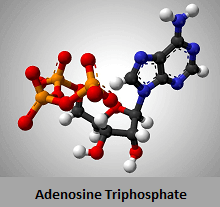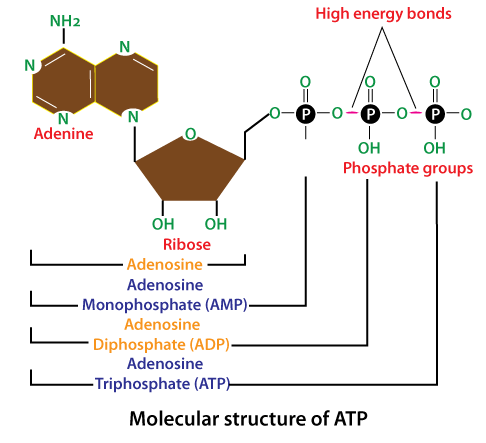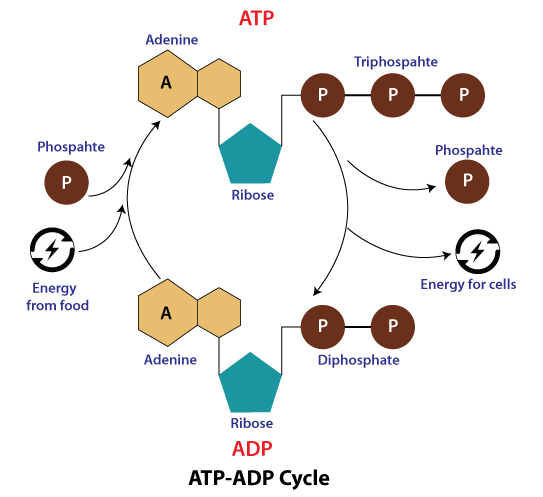ATP - Adenosine Triphosphate
All living things need an appropriate level of energy for survival. And in such cases, ATP, an essential biological compound, comes into the role. ATP stands for Adenosine Triphosphate, and most cellular activities like nerve pulse propagation, condensate dissolution, muscle contraction and chemical synthesis are carried out by the energy provided by the Adenosine Triphosphate upon the hydrolysis with other biological compounds. All living cells use ATP as their major source of energy. Oxygen, Carbon, nitrogen, hydrogen, and phosphorus are all elements that makeup ATP. It is easily hydrolyzed to release a substantial quantity of energy due to unstable, high-energy bonds. What Does ATP Do?Adenosine triphosphate performs the following three main activities in the body as it makes the chemicals move, such as sodium, calcium, and potassium, throughout the cell membranes. ATP is also required for the production of chemical molecules such as protein and cholesterol. And as we discussed earlier, it also acts as a source of energy for physical activity, such as muscular contraction. Structure of ATP
We can get a brief idea of the structure of the Adenosine triphosphate with its name only. Adenosine comprises the two elements, i.e. Adenine and Ribose sugar, while triphosphate means the three serially bonded phosphate groups. All three elements Adenine, Ribose, and the three amount of phosphate, make up the ATP. The serially bonded phosphate makes a high energy bond and plays a vital role in hydrolysis. Terms Need To Understand before Moving FurtherAlong with ATP, there will be a few terms to which we will come across while discussing it's working. So let's have a look at those terms.
Working of ATPAs we discussed above, ATP is responsible for all the activities that consume energy. It stores and releases energy upon a biological reaction. It's a cyclic process where energy is regained based on requirement and stored for future activities where energy gets required once released. The high energy content of an ATP molecule is due to its two high-energy phosphate bonds termed phosphoanhydride bonds. During the hydrolysis of ATP's third phosphate group, Adenosine Diphosphate (ADP) and inorganic phosphate, as well as a major quantity of energy, is released. 
ADP can absorb the energy and recover the group from manufacturing an ATP molecule again to ensure a steady ATP concentration. Similarly, when one phosphate is taken from ADP by the further process of hydrolysis to produce adenosine monophosphate, energy is released. The energy stored in AMP can then be regenerated into ADP or ATP by creating new phosphoanhydride bonds. ADP, AMP, and ATP are constantly metabolized throughout the cell as they participate in biological activities to support the cell's life. Role of ATPATP's primary function is to provide energy. The methods it delivers energy are listed below.
Methods of Producing ATPGenerally, by four methods, ATP can be produced to carry out the basic functionality of cells. Let's have a brief of those.
ConclusionIn this article, we discussed ATP, i.e. Adenosine Triphosphate, In brief. We went through the main functionality along with its structure. We came to know when the high energy bond (i.e. Phosphoanhydride bonds) of the triphosphate breaks, the energy gets released to fulfil the requirement of energy during the cellular activities. Also, ATP can store the energy by regaining the high energy bond for future requirements.
Next TopicIMPS - Immediate Payment Service
|
 For Videos Join Our Youtube Channel: Join Now
For Videos Join Our Youtube Channel: Join Now
Feedback
- Send your Feedback to [email protected]
Help Others, Please Share










